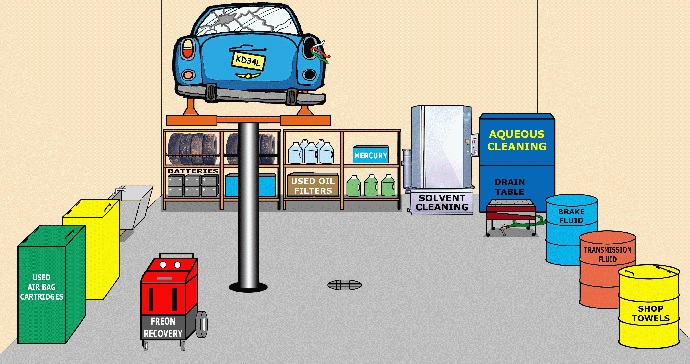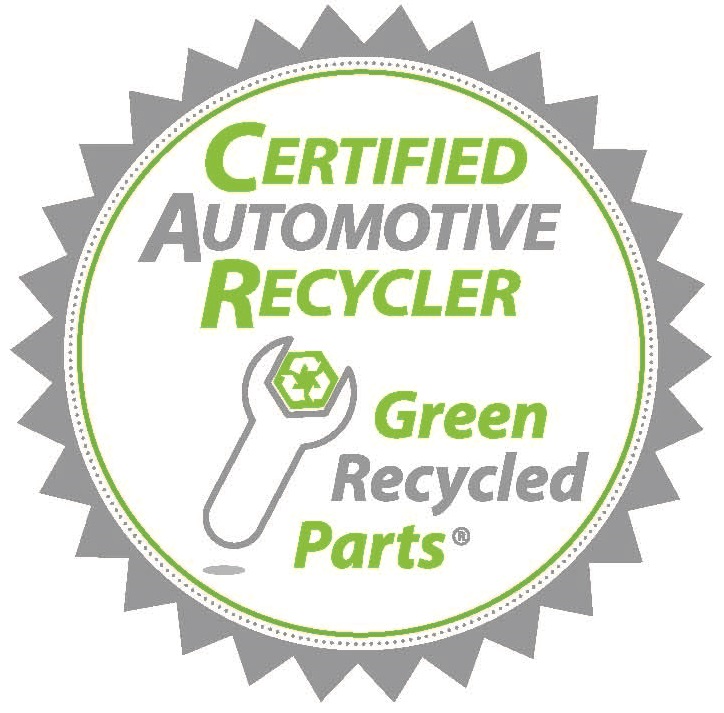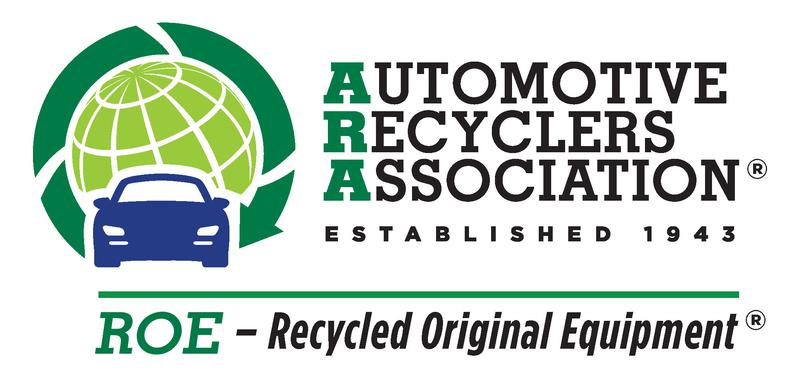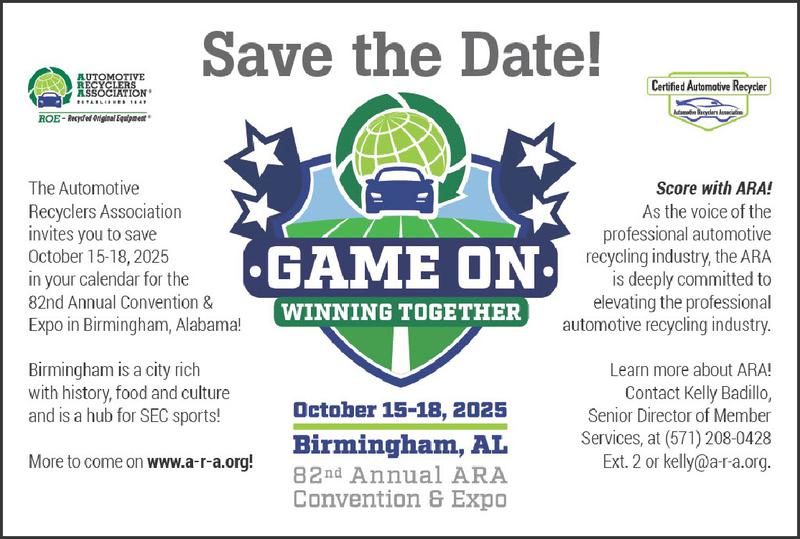While we have tried to present a summary of the essential information on this topic, be aware that other items, such as local regulations, may apply to you. Please read the disclaimer.
ECAR Fact Sheet Hazardous Wastes
Wastes are classified as "hazardous" if they exhibit certain characteristics (for instance, if they are ignitable, corrosive, reactive, or toxic). Wastes can also be specifically listed as hazardous.
Hazardous waste generated by automotive recycling may include:
• Spent solvents
Spent solvents
• Solvent contaminated wipers/shop towels
Solvent contaminated wipers/shop towels
• Waste paints
Waste paints
• Spent fluorescent bulbs (containing mercury)
Spent fluorescent bulbs (containing mercury)
• Mercury switches
Mercury switches
• Used antifreeze contaminated with metals, solvents or fuels
Used antifreeze contaminated with metals, solvents or fuels
• Used oil contaminated with metals, solvent or fuels
Used oil contaminated with metals, solvent or fuels
• Contaminated gasoline
Contaminated gasoline
• Lead-acid batteries.
Lead-acid batteries.
If you are managing the waste as hazardous, here are some of the main rules:
- You are responsible for the waste from the "cradle" - the time the waste is first generated to the "grave" - the time the waste reaches final disposal - and sometimes beyond.
- You can only store the waste for a limited time on your site before sending it to an approved hazardous waste facility. (The time limit will depend on how much hazardous waste you generate.)
- You have to use a licensed waste hauler to transport the waste off-site.
- You have to keep a record (called a "shipping manifest") of the shipment for a specified period of time.
Introduction
This plain language guide fact sheet on the "federal" requirements for hazardous waste management. Many "states" have their own hazardous waste regulations based on the federal rules. In some of these states, the requirements are the same as the federal standards. Other states, however, have developed more stringent requirements than the federal program. If this is the case in your state, you must comply with the more stringent state regulations. To become familiar with your state requirements, consult your state hazardous waste agency.
What is RCRA
The Resource Conservation and Recovery Act or RCRA (pronounced "rick-rah") is the central law that gives EPA the authority to control hazardous waste from the "cradle-to-grave." This includes the generation, transportation, treatment, storage, and disposal of hazardous waste. RCRA also set forth a framework for the management of non-hazardous wastes. The RCRA regulations apply to most businesses that generate hazardous waste.
To determine if these regulations apply to your business you must:
- Determine if you generate hazardous waste in the first place.
- Measure the amount of hazardous waste that you produce per month.
- Determine your generator category to learn the management requirements that apply to you.
Obtaining an EPA Identification Number
RCRA regulations require Small Quantity Generators ( SQG) and Large Quantity Generators ( LQG) to obtain an EPA identification number. Conditionally Exempt Small Quantity Generators ( CESQG) are exempt. EPA and states use these 12-character numbers to monitor and track hazardous waste activities. You will need to use your identification number when you send waste off site to be managed.
To obtain an EPA ID number, you should:
- •
 Call or write your state hazardous waste management agency or the hazardous waste division of your EPA Regional office and ask for a copy of EPA Form 8700-12, "Notification of Hazardous Waste Activity."
Call or write your state hazardous waste management agency or the hazardous waste division of your EPA Regional office and ask for a copy of EPA Form 8700-12, "Notification of Hazardous Waste Activity."
- You will be sent a booklet that contains a form with instructions and those portions of the regulations that will help you identify your waste. (Note: A few states use a form that is different from the federal form. Your state agency will send you the appropriate form to complete.)
- •
 Fill in the form. To complete Item IX of the form, you will need to identify your hazardous waste by its EPA Hazardous Waste Code. For a complete list of waste codes, you should consult 40 CFR Part 261, or call your state or regional EPA office or the RCRA Hotline (800-424-9346 or in the Washington DC area call 703-412-9810). The form you receive from your state may contain an additional sheet that provides more space for waste codes. Complete one copy of the form for each business site where you generate or handle hazardous waste. Each site will receive its own EPA Identification Number. Make sure you sign the certification in Item X.
Fill in the form. To complete Item IX of the form, you will need to identify your hazardous waste by its EPA Hazardous Waste Code. For a complete list of waste codes, you should consult 40 CFR Part 261, or call your state or regional EPA office or the RCRA Hotline (800-424-9346 or in the Washington DC area call 703-412-9810). The form you receive from your state may contain an additional sheet that provides more space for waste codes. Complete one copy of the form for each business site where you generate or handle hazardous waste. Each site will receive its own EPA Identification Number. Make sure you sign the certification in Item X.
- •
 Send the completed form to your state hazardous waste contact. This address is listed in the information booklet that you will receive with the form.
Send the completed form to your state hazardous waste contact. This address is listed in the information booklet that you will receive with the form.
EPA records the information on the form and assigns an EPA Identification Number to the site identified on your form. The EPA number stays with the property when ownership changes. If you move your business, you must notify EPA or the state of your new location and submit a new form. If another business previously handled hazardous waste at this location and obtained an EPA Identification Number, you will be assigned the same number after you have notified EPA that you have moved to this location. Otherwise, EPA will assign you a new identification number.
Managing Hazardous Waste at Your Facility
Most auto recyclers accumulate some hazardous waste on site for a short period of time and then ship it off site to a treatment, storage, or disposal facility. Accumulating hazardous waste on site can pose a threat to human health and the environment, so you may only keep it for a short time without a permit. Before shipping the waste for disposal or recycling, you are responsible for its safe management, which includes:
- •
 Storage
Storage
- •
 Preventing Accidents
Preventing Accidents
- •
 Responding to Emergencies
Responding to Emergencies
SQGs can accumulate no more than 13,228 lbs. (6,000 kg) of hazardous waste on site for up to 180 days without a permit. You can accumulate this amount of waste for up to 270 days if you must transport it more than 200 miles away for recovery, treatment, or disposal. Limited extensions may be granted by the state director or the regional EPA administrator. If you exceed these limits, you are considered a TSDF and must obtain an operating permit.
SQGs must accumulate waste in tanks or containers, such as 55-gallon drums. Your storage tanks and containers must be managed according to EPA requirements summarized below.
For containers (e.g., drums) you must:
- •
 Label each container with the words "HAZARDOUS WASTE," and mark each container with the date the waste was generated.
Label each container with the words "HAZARDOUS WASTE," and mark each container with the date the waste was generated.
- •
 Use a container made of, or lined with, a material that is compatible with the hazardous waste to be stored. (This will prevent the waste from reacting with or corroding the container.)
Use a container made of, or lined with, a material that is compatible with the hazardous waste to be stored. (This will prevent the waste from reacting with or corroding the container.)
- •
 Keep all containers holding hazardous waste closed during storage, except when adding or removing waste. Do not open, handle, or store (stack) containers in a way that might rupture them, cause them to leak, or otherwise fail.
Keep all containers holding hazardous waste closed during storage, except when adding or removing waste. Do not open, handle, or store (stack) containers in a way that might rupture them, cause them to leak, or otherwise fail.
- •
 Inspect areas where containers are stored at least weekly. Look for leaks and for deterioration caused by corrosion or other factors.
Inspect areas where containers are stored at least weekly. Look for leaks and for deterioration caused by corrosion or other factors.
- •
 Maintain the containers in good condition. If a container leaks, put the hazardous waste in another container, or contain it in some other way that complies with EPA regulations.
Maintain the containers in good condition. If a container leaks, put the hazardous waste in another container, or contain it in some other way that complies with EPA regulations.
- •
 Do not mix incompatible wastes or materials unless precautions are taken to prevent certain hazards.
Do not mix incompatible wastes or materials unless precautions are taken to prevent certain hazards.
For tanks, you must (applicable to SQGs and LQGs):
- •
 Label each tank with the words "HAZARDOUS WASTE."
Label each tank with the words "HAZARDOUS WASTE."
- •
 Store only waste that will not cause the tank or the inner liner of the tank to rupture, leak, corrode, or fail.
Store only waste that will not cause the tank or the inner liner of the tank to rupture, leak, corrode, or fail.
- •
 Equip tanks that have an automatic waste feed with a waste feed cutoff system, or a bypass system for use in the event of a leak or overflow.
Equip tanks that have an automatic waste feed with a waste feed cutoff system, or a bypass system for use in the event of a leak or overflow.
- •
 Inspect discharge control and monitoring equipment and the level of waste in uncovered tanks at least once each operating day. Inspect the tanks and surrounding areas for leaks or other problems (such as corrosion) at least weekly.
Inspect discharge control and monitoring equipment and the level of waste in uncovered tanks at least once each operating day. Inspect the tanks and surrounding areas for leaks or other problems (such as corrosion) at least weekly.
- •
 Use the National Fire Protection Associations (NFPA's) buffer zone requirements for covered tanks containing ignitable or reactive wastes. These requirements specify distances considered to be safe buffer zones for various ignitable or reactive wastes. You can reach the NFPA at 617-770-3000.
Use the National Fire Protection Associations (NFPA's) buffer zone requirements for covered tanks containing ignitable or reactive wastes. These requirements specify distances considered to be safe buffer zones for various ignitable or reactive wastes. You can reach the NFPA at 617-770-3000.
- •
 Do not mix incompatible wastes or materials unless precautions are taken to prevent certain hazards.
Do not mix incompatible wastes or materials unless precautions are taken to prevent certain hazards.
- •
 Do not place ignitable or reactive wastes in tanks unless certain precautions are taken.
Do not place ignitable or reactive wastes in tanks unless certain precautions are taken.
- •
 Provide at least two feet (60 centimeters) of freeboard (space at the top of each tank) in uncovered tanks, unless the tank is equipped with a containment structure, a drainage control system, or a standby tank with adequate capacity.
Provide at least two feet (60 centimeters) of freeboard (space at the top of each tank) in uncovered tanks, unless the tank is equipped with a containment structure, a drainage control system, or a standby tank with adequate capacity.
The complete regulations with regard to storage are found in 40 CFR 262.34.
Preventing Accidents
Whenever you store hazardous waste on site, you must minimize the potential risks from fires, explosions, or other accidents.
All SQGs and LQGs that store hazardous waste on site must be equipped with:
- •
 An internal communications or alarm system capable of providing immediate emergency instruction (voice or signal) to all personnel.
An internal communications or alarm system capable of providing immediate emergency instruction (voice or signal) to all personnel.
- •
 A device, such as a telephone (immediately available at the scene of operations) or a hand-held, two-way radio, capable of summoning emergency assistance from local police and fire departments or emergency response teams.
A device, such as a telephone (immediately available at the scene of operations) or a hand-held, two-way radio, capable of summoning emergency assistance from local police and fire departments or emergency response teams.
- •
 Portable fire extinguishers, fire control devices (including special extinguishing equipment, such as that using foam, inert gas, or dry chemicals), spill control materials, and decontamination supplies.
Portable fire extinguishers, fire control devices (including special extinguishing equipment, such as that using foam, inert gas, or dry chemicals), spill control materials, and decontamination supplies.
- •
 Water at adequate volume and pressure to supply water hose streams, foam-producing equipment, automatic sprinklers, or water spray systems.
Water at adequate volume and pressure to supply water hose streams, foam-producing equipment, automatic sprinklers, or water spray systems.
You must test and maintain all equipment to ensure proper operation. Allow sufficient aisle space to permit the unobstructed movement of personnel, fire protection equipment, spill control equipment, and decontamination equipment to any area of facility operation. Attempt to secure arrangements with fire departments, police, emergency response teams, equipment suppliers, and local hospitals, as appropriate, to provide services in the event of an emergency. Ensure that personnel handling hazardous waste have immediate access to an alarm or emergency communications device.
Responding to Emergencies
You must be prepared for an emergency at your facility. One way is to develop a contingency plan, which is a requirement for LQGs. A contingency plan usually answers a set of "what if" questions. For example: "What if there is a fire in the area where hazardous waste is stored?" or "What if I spill hazardous waste, or one of my hazardous waste containers leaks?" Although EPA does not require SQGs to develop a written contingency plan, in case of a fire, explosion, or toxic release, having such a plan would provide an organized and coordinated course of action. EPA does require SQGs to establish basic safety guidelines and response procedures to follow in the event of an emergency.
If you think you have an emergency spill, call the National Response Center at 800 424-8802.
In the event of a fire, explosion, or other release of hazardous waste that could threaten human health outside the facility, or if you think that a spill has reached surface water, call the National Response Center to report the emergency. The Response Center will evaluate the situation and help you make appropriate emergency decisions. In many cases, you will find that the problem you faced was not a true emergency, but "it is better to call if you are not sure." Stiff penalties exist for failing to report emergencies.
Shipping Wastes Off-Site
When shipping waste off site, SQGs and LQGs must follow certain procedures that are designed to ensure safe transport and proper management of the waste.
• Package, label, and mark your shipment, and placard the vehicle in which your waste is shipped as specified in DOT regulations.
Package, label, and mark your shipment, and placard the vehicle in which your waste is shipped as specified in DOT regulations.
• Prepare a hazardous waste manifest to accompany your shipment.
Prepare a hazardous waste manifest to accompany your shipment.
• Include a notice and certification with each waste shipment.
Include a notice and certification with each waste shipment.
• Ensure the proper management of any hazardous waste you ship (even when it is no longer in your possession).
Ensure the proper management of any hazardous waste you ship (even when it is no longer in your possession).
Selecting a TSDF
SQGs and LQGs may send their waste only to a regulated treatment/storage/disposal facility (TSDF) or recycler. Most regulated TSDFs and recyclers will have a permit from the state or EPA. Some, however, may operate under other regulations that do not require a permit. Check with the appropriate state authorities to be sure the facility you select has any necessary permits. All TSDFs and recyclers must have EPA identification numbers.
Labeling Waste Shipments
SQGs and LQGs must properly package, label, and mark all hazardous waste shipments, and placard the vehicles in which these wastes are shipped following Department of Transportation (DOT) regulations. Most small businesses use a commercial transporter to ship hazardous waste. These transporters can advise you on specific requirements for placarding, labeling, marking, and packaging; however, you remain responsible for compliance. For additional information, consult the DOT regulations (49 CFR Parts 172 and 173), or call the DOT hazardous materials information line at 202 366-4488.
Federal regulations allow you to transport your own hazardous waste to a designated TSDF provided that you comply with DOT rules. Some states, however, do not allow this practice. Call DOT and your state hazardous waste management agency regarding applicable regulations.
Selecting a Transporter or TSDF/Recycler
It is important to choose your transporter and your TSDF carefully since you remain responsible for the proper management of your hazardous waste even after it has left your site. For help in choosing a transporter or TSDF, check with the following sources:
- •
 References from business colleagues who have used a specific hazardous waste transporter or TSDF.
References from business colleagues who have used a specific hazardous waste transporter or TSDF.
- •
 Trade associations for your industry that might keep a file on companies that handle hazardous waste.
Trade associations for your industry that might keep a file on companies that handle hazardous waste.
- •
 The Better Business Bureau or Chamber of Commerce in the TSDF's area, which might have a record of any complaints registered against a transporter or a facility.
The Better Business Bureau or Chamber of Commerce in the TSDF's area, which might have a record of any complaints registered against a transporter or a facility.
- •
 Your state hazardous waste management agency or EPA Regional office, which can tell you whether the transporter or TSDF has a U.S. EPA identification number and a permit, if required.
Your state hazardous waste management agency or EPA Regional office, which can tell you whether the transporter or TSDF has a U.S. EPA identification number and a permit, if required.
Preparing Hazardous Waste Manifests
A hazardous waste manifest must accompany all hazardous waste that is shipped off site. A hazardous waste manifest is a multipart form designed to track hazardous waste from generation to disposal. It will help you to track your waste during shipment and make sure it arrives at the proper destination. If you send waste to a recycling facility, you may be able to use a tolling agreement instead of a manifest. A tolling agreement is a "closed-loop" arrangement whereby a generator contracts with a recycling company to reclaim its hazardous waste and return it as a recycled product, thereby avoiding disposal. A copy of the contract must be kept on file for three years after the contract has ended.
Various versions of hazardous waste manifest forms are available. Some states require their own manifest form. If the state to which you are shipping your waste requires its own manifest, use that states form. To obtain manifest forms, contact the hazardous waste management agency of the recipient state, your transporter, or the TSDF that you intend to use. If the state to which you are shipping your waste does not have its own manifest, but the state in which your waste was generated does require its own manifest, use your states form. To obtain blank forms, contact your transporter or your state hazardous waste agency. If neither state requires a manifest, you can use the federal Uniform Hazardous Waste Manifest, EPA Form 8700-22. Copies are available from some transporters, TSDFs, and some commercial printers. Your state hazardous waste agency can refer you to manifest suppliers.
You must fill in all parts of a manifest. Information requested includes: name of transporter, name of the designated facility, your EPA ID number, and a description of the waste based on DOT requirements, such as proper shipping name and hazard class. Call the DOT information line for more information on DOT waste description requirements.
The transporter signs the completed manifest when the shipment is accepted for transport. The facility operator at the designated TSDF also signs the form when the shipment is received and sends a copy of it back to you. You must keep this copy on file for three years. (It might be a good practice, however, to keep it for as long as you are in business.)
Any SQG that does not receive a signed copy of the manifest from the designated TSDF within 60 days of shipment must submit a legible copy of the manifest to the state or EPA regional office. This copy, known as an exception report, simply indicates that a signed copy was not received from the facility operator.
Treating Your Waste to Meet the Land Disposal Restrictions (LDRs)
Most hazardous wastes may not be land disposed unless they meet "treatment standards. "The Land Disposal Restrictions (LDR) program requires that the waste is treated to reduce the hazardous constituents to levels set by EPA, or that the waste is treated using a specific technology. It is your responsibility to ensure that your waste is treated to meet LDR treatment standards before it is land disposed. (See below for a description of required LDR notices.) Most SQGs probably will have their designated TSDF do this treatment. If you choose to treat your waste yourself to meet LDR treatment standards, there are additional requirements including waste analysis plans, notifications, and certifications. To learn about these requirements call the RCRA Hotline, your state agency, or EPA Regional office, and consult 40 CFR Part 268.
Regardless of where the waste is being sent, for each shipment of waste subject to LDRs you must send the receiving TSDF or recycler an LDR notice. This notice must provide information about your waste, such as the EPA hazardous waste code and the LDR treatment standard. The purpose of this notice is to let the TSDF know that the waste must meet treatment standards before it is land disposed. There is no required form for this notice, but your TSDF may provide a form for you to use. A certification may also be required in specific situations. Call the RCRA Hotline, your state agency, or EPA regional office and consult 40 CFR Part 268 for help with LDR notification and certification requirements.
Reporting and Recordkeeping
Biennial Report (SQGs and LQGs only)
SQGs and LQGs who ship hazardous waste off-site to a TSDF must prepare and submit a Biennial Report to the EPA Regional Administrator by March 1 of each even numbered year (1998, 2000, 2002, etc.). Use EPA Form 8700 13A for submitting the report, and include the following information:
- •
 The EPA identification number, name, and address of the generator;
The EPA identification number, name, and address of the generator;
- •
 The calendar year covered by the report
The calendar year covered by the report
- •
 Your EPA identification number, name, and address for each off-site treatment, storage, or disposal facility to which waste was shipped
Your EPA identification number, name, and address for each off-site treatment, storage, or disposal facility to which waste was shipped
- •
 The name and EPA identification number of each transporter used
The name and EPA identification number of each transporter used
- •
 A description, EPA hazardous waste number (from 40 CFR part 261, subpart C or D), DOT hazard class, and quantity of each hazardous waste shipped off-site
A description, EPA hazardous waste number (from 40 CFR part 261, subpart C or D), DOT hazard class, and quantity of each hazardous waste shipped off-site
- •
 A description of the efforts undertaken during the year to reduce the volume and toxicity of waste generated.
A description of the efforts undertaken during the year to reduce the volume and toxicity of waste generated.
- •
 A description of the changes in volume and toxicity of waste actually achieved during the year in comparison to previous years
A description of the changes in volume and toxicity of waste actually achieved during the year in comparison to previous years
- •
 The certification signed by the generator or authorized representative.
The certification signed by the generator or authorized representative.
Exception Reporting (SQGs and LQGs only)
Exception reports are part of the RCRA tracking system. After you send waste off-site for disposal, the TSDF is required to return to you a copy of the original manifest. If you don't receive the manifest from the TSDF, then you must submit an Exception Report. SQGs must file a Exception Report if they have not received a copy of the manifest with the handwritten signature of the owner or operator of the designated facility within 45 days of the date the waste was accepted by the initial transporter. There is no special form for the Exception Report. You can write directly on a copy of the manifest or attach a separate sheet of paper (handwritten or typed). Make sure you include:
- •
 A legible copy of the manifest in question
A legible copy of the manifest in question
- •
 A statement explaining the efforts taken to locate the hazardous waste
A statement explaining the efforts taken to locate the hazardous waste
- •
 Your signature
Your signature
The Exception Reprting requirements for LQGs are a little different. If you do not receive a copy of the manifest within 35 days of the date that the waste was accepted by the original transporter, you must contact the transporter and TSDF to determine the status of the waste. If you still haven't received a copy of the manifest within 45 days, then you must submit the Exception Report as described above for SQGs.
Recordkeeping
You must retain records for three years, including:
- •
 Manifests
Manifests
- •
 Biennial Reports
Biennial Reports
- •
 Exception Reports
Exception Reports
- •
 Any test results, waste analyses, or similar information related to the waste shipped off-site
Any test results, waste analyses, or similar information related to the waste shipped off-site
- •
 Your inspection schedule and reports. (Specific inspection requirements are found in 40 CFR 265.15.)
Your inspection schedule and reports. (Specific inspection requirements are found in 40 CFR 265.15.)
The three-year time period is automatically extended indefinitely if you have any unresolved enforcement action. In this case, maintain the files until all matters are fully resolved.
Where to Get More Help
Hazardous Waste Database. RCRA requires that generators, transporters, treaters, storers, and disposers of hazardous waste provide information concerning their activities to state environmental agencies. These hazardous waste data are contained in the Resource Conservation and Recovery Information System (RCRIS). You can search this database using any combination of facility name, geographic location, standard industrial classification, and chemicals.
Understanding the Hazardous Waste Rules. A Handbook for small businesses that is targeted to small quantity generators of hazardous wastes. The manual helps small businesses determine whether they generate hazardous waste and provides comprehensive information on how to comply with the federal hazardous waste regulations for small quantity generators. It explains how to obtain an EPA identification number, manage hazardous waste on site, ship hazardous waste off site, comply with land disposal restrictions, and conduct good housekeeping.
RCRA Hotline. This free service is operated by an EPA contractor. You can call with questions regarding Federal rules or ask for referrals to state agencies. You are not required to provide your name or company name. The number to call is 800-424-9346 (in the Washington DC area call 703-412-9810).
Small Business Ombudsman Clearinghouse/Hotline. Helps private citizens, small businesses, and smaller communities with questions on all program aspects within EPA.
U.S. Environmental Protection Agency
Small Business Ombudsman (1230C)
401 M Street, SW.
Washington, DC 20460
Phone: 800 368-5888
Fax: 703 305-6462
Department of Transportation (DOT) Hotline. Answers questions on matters related to DOT's hazardous materials transportation regulations.
Office of Hazardous Materials Standards (DOT)
Research and Special Programs Administration
400 7th Street, SW.
Washington, DC 20590-0001
Phone: 202 366-4488
Fax: 202 366-3753
RCRA Docket Information Center (RIC). Holds and provides public access to all regulatory materials on solid waste and distributes technical and non technical information on solid waste.
U.S. Environmental Protection Agency
RCRA Docket Information Center (5305)
401 M Street, SW.
Washington, DC 2046
0 Phone: 202 260-9327
Fax: 202 260-9327
E-mail: RCRA-Docket @ epamail.epa.gov
EPA REGIONAL CONTACTS
EPA Region 1
Waste Management Branch
JFK Federal Building
Boston, MA 02203-2211
617 573-5770
Library: 617 573-9687
EPA Region 2
Hazardous Waste Compliance Branch
290 Broadway, 21st Floor
New York, NY 10007-1866
212 637-3000
Library: 212 637-3187
EPA Region 3
Hazardous Waste Management Division (3HW00)
841 Chestnut Street
Philadelphia, PA 19107
215 597-9800
Library: 215 597-6633
EPA Region 4
RCRA Branch
345 Courtland Street, NE
Atlanta, GA 30365
404 347-3016
Library: 404 347-4216
EPA Region 5
RCRA Program Management Branch
77 W. Jackson Boulevard
Chicago, IL 60604
312 353-8510
Library: 312 353-2022
EPA Region 6
RCRA Programs Branch (6H-H)
1445 Ross Avenue
Dallas, TX 75202
214 665-6444
Library: 214 665-6424
EPA Region 7
RCRA Branch
726 Minnesota Avenue
Kansas City, KS 66101
913 551-7020
Library: 913 551-7241
EPA Region 8
Hazardous Waste Management Division
One Denver Place
999 18th Street, Suite 500 (8HWM)
Denver, CO 80202-2466
303 293-1603
Library: 303 293-1603 or 800 227-8917 (Within Region)
EPA Region 9
Hazardous Waste Management Division
75 Hawthorne Street
San Francisco, CA 94105
415 744-1730
Library: 415 744-1510
EPA Region 10
Waste Management Branch (HW-102)
1200 Sixth Avenue
Seattle, WA 98101
206 553-1200
Library: 206 553-1289
ECAR Fact Sheet Hazardous Waste
The fact sheets are designed to assist automotive recyclers with operating their businesses and managing their wastes in compliance with the environmental laws in Iowa. ECAR tries to provides timely and essential information on this topic, but be aware that other items, such as local regulations and recent changes, may apply. Read the Disclaimer. Return to the ECAR Virtual Tour.







